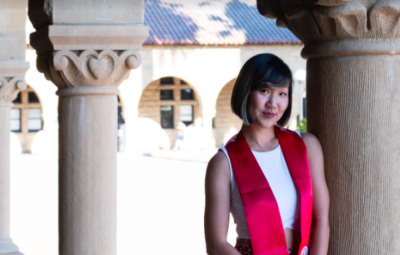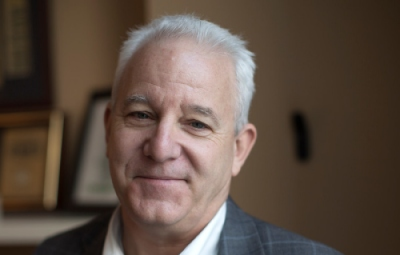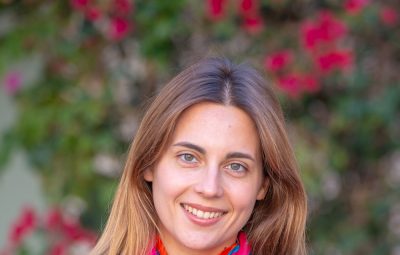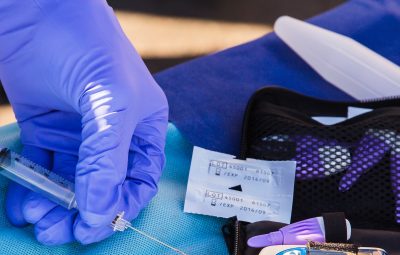Pinar Yoldas describes herself as an interdisciplinary designer, artist and researcher whose current research revolves around speculative biology, in which she designs and creates what could possibly be the next steps of evolution regarding human tissues, organs, and bodies. Evolution, in the eyes of Yoldas, includes the potential for humans in the future to possess modular bodies in which humans can interchange or add on additional sexual organs.
She is currently an Assistant Professor in the Visual Arts Department at UC San Diego and a member of The Design Lab. While she earned her PhD in Visual and Media Design from Duke University, her interests and credentials don’t stop there. Yoldas also holds a MFA in Game and Interactive Media Design from UC Los Angeles; a MA in Visual Arts from Bilgi University; a MS in Information Technologies from Istanbul Technical University; and a Bachelors of Architecture with a minor is Sociology from Middle East Technical University. Combining her passions for science, art, and undoubtedly, education, Yoldas has impressively served as a bridge throughout her career between five different disciplines and serves as an inspiration for the pursuit and practical application of interdisciplinary science and art studies.
Originally from Istanbul, Turkey, Yoldas’ love for art started young. She recalls being treated as a child prodigy due to her unusually advanced ability to draw. “I started drawing even before I could speak. This is documented by my parents,” she explains. “I had my first art exhibition when I was five, so a lot of people thought ‘Oh, this is a child prodigy, she’s gonna be a famous painter.’”

Being a famous painter, however, was not Yoldas’ goal. By high school, she decided to focus on specialization in chemistry at Izmir College of Science, a high school in Istanbul that was known to be difficult to be admitted to. “I attended a science college, which only accepted maybe point-one-percent of the Turkish youth,” she says. Not only did she pass the exam required to be admitted, while also being one of only a few females admitted during her time there, Yoldas won a bronze medal in organic chemistry in the national science Olympics. “I was the only girl on the team…I was a minority.”
It was majoring in architecture at Middle East Technical University (METU) that first launched Yoldas’ interdisciplinary studies career. She reasoned that architecture would be the field that could combine her interest in art, math and science. After persevering through the program, earning her BA in Architecture, she continued her quest for knowledge earning two more master degrees in Istanbul, before finally turning her academic sights to the United States.
Yoldas fearlessly made the move to Los Angeles in 2006 to study at UCLA, but she says the transition from Turkey to the U.S. was not without some elements of culture shock. She says it was the size of the cities in the U.S. themselves, and the impact that size had on social interactions, that was the most drastic change. “[Los Angeles] is spread in such a big terrain that you have to drive everywhere,” she explains. “Where I come from, there is a grocery store down the street, and if you go there and you buy something, and if you don’t have enough cash, [the store owner] will say ‘It’s okay, we just write your name’ and you go there the next day and pay. So there are different cultural agreements and social contracts.”
Yoldas’ focus on the various life stages of a design and its role in the ecosystem of our planet and human interaction can be seen throughout her accomplishments. After earning her PhD at Duke University, her book, An Ecosystem of Excess, was published in 2014. She received the John Simon Guggenheim Fellow in Fine Arts in 2015, where she set out to construct an air filter which also functions as a public sculpture and an amphitheater. Yoldas was also a Future Emerging Arts and Technologies Award recipient in 2016.
Despite her numerous accomplishments both academically and creatively, Yoldas remains humble and open to lifelong learning and practice. “I never really want to think of myself as an expert,” she says. “In any of the domains, I always teach myself as if I’m just starting off. I don’t want to feel like, ‘Okay, I’ve covered this now, I have this badge and you can ask me anything.’” Rather, Yoldas prefers to view her journey through her many fields of study like navigating through a building. “Think of it as a very big building, where there are a lot of doors, transitions, and portals. As you’re navigating this building, sometimes you find yourself on a floor where you need to open a door to go to a totally different part of this building.” She elaborates by incorporating examples from her own fields of study. Yoldas gave the example of how particular design cues in architecture are meant to elicit particular emotions from the users, then in order to understand why, could lead her to psychology, which could then lead her to further research in neuroscience.
Perhaps what differentiates Yoldas from conventional thinking is her unconventional approach to translating her science studies and research by way of hand drawing and sculpting techniques. She is a proudly self-proclaimed “over-designer,” the term after once being told one of her designs in the architectural field was “over-designed.” Yoldas took this term and transformed its meaning, claiming ownership of being neither the opposite of minimalist, nor actually over-designing. “It’s not the opposite of [minimalism], it’s not like filling a space with a lot of things,” she explains. “I think I’m embracing [over-designer] as a term right now because it highlights the fact that, as a designer, when you’re designing a simple thing like a pencil, you’re not only designing its form, but you have to also think about how that object comes to be; how is it made if these practices of production are harmful in any way to living things and living systems, and what is its afterlife?”
Yoldas’ interdisciplinary background and creative approach are the ingredients necessary for innovative design thinking at the core of the Design Lab mission to collaborate across disciplines, working towards solutions to complex problems. It has been a long journey, but Yoldas explains that the educational expedition has been worth it. “To me, at this stage of my life and academic journey, a lot of things kind of came full circle,” she says. “I feel like I started off with a question, and I did all of those things, and now I have a very solid response to my question. So, most of the time, I think this interdisciplinary endeavor paid off for me.”






